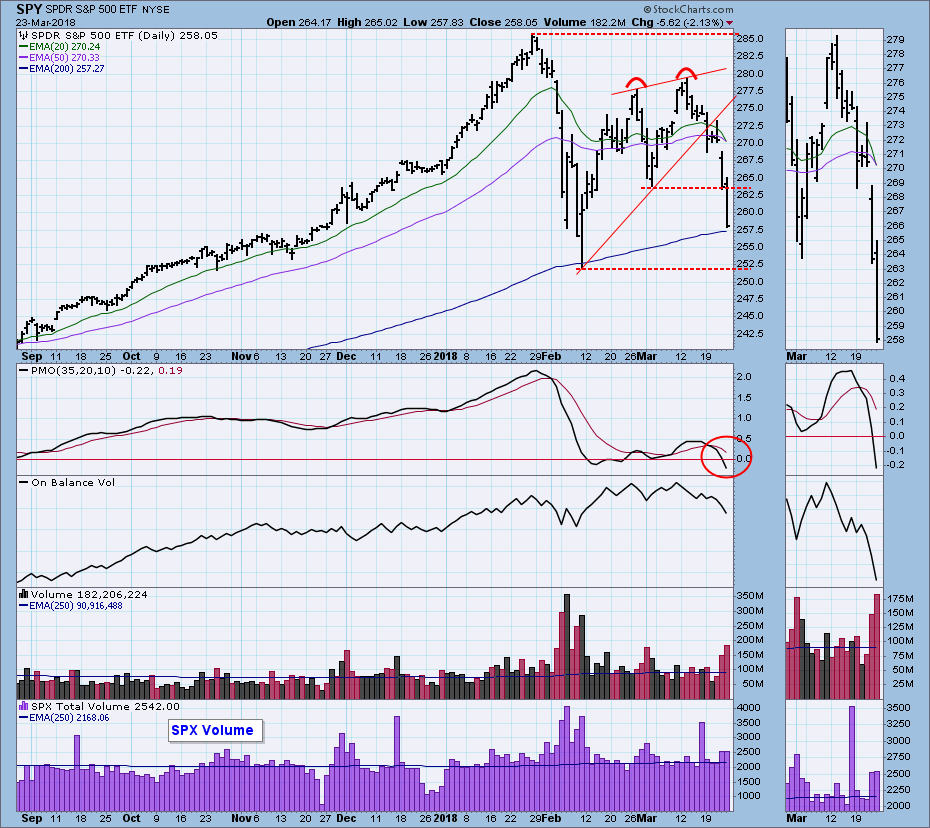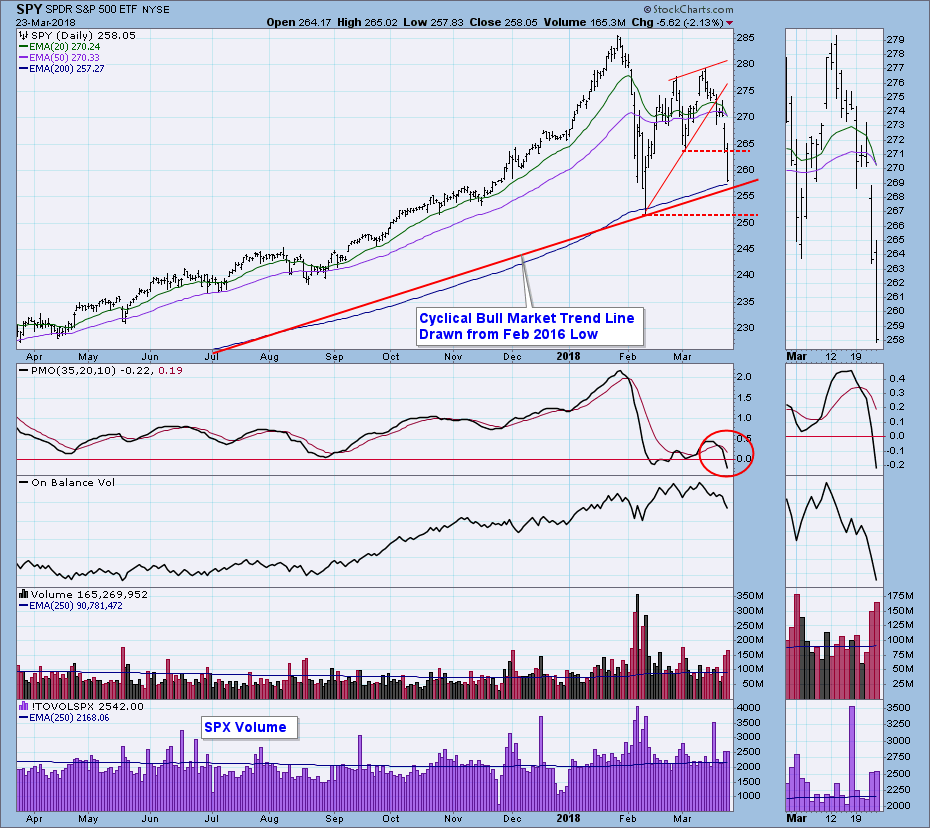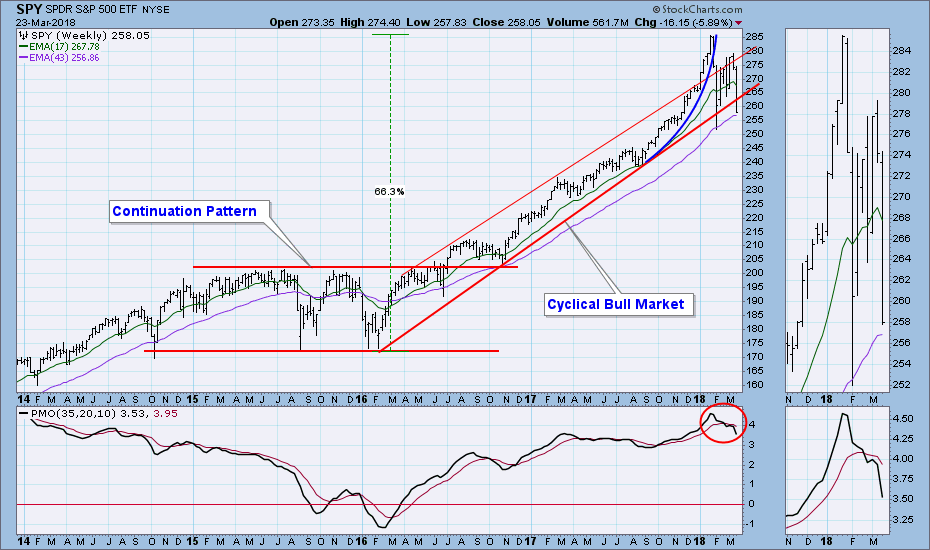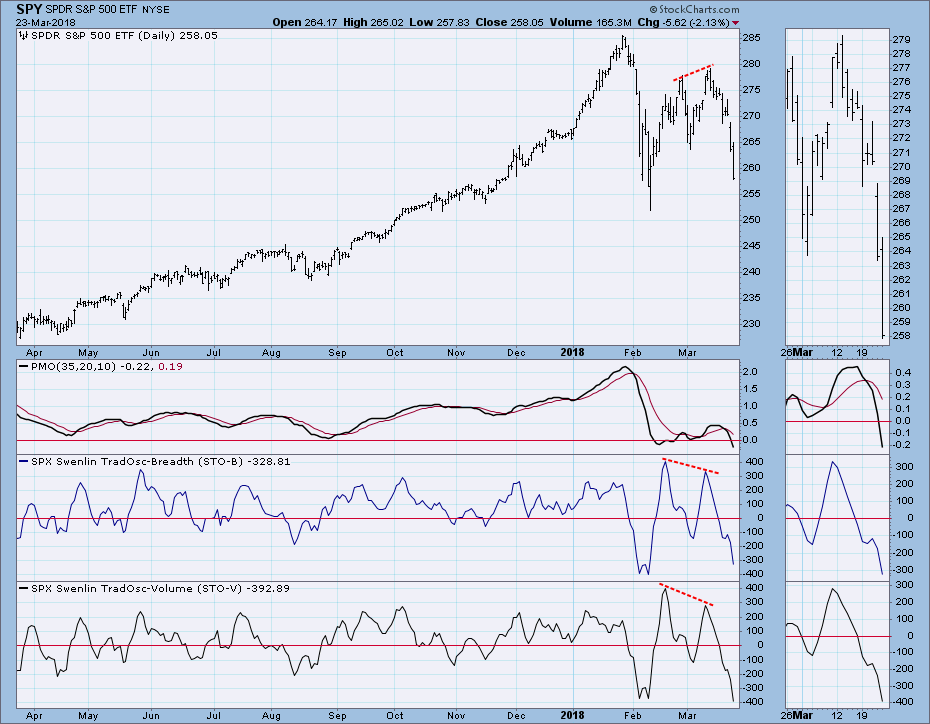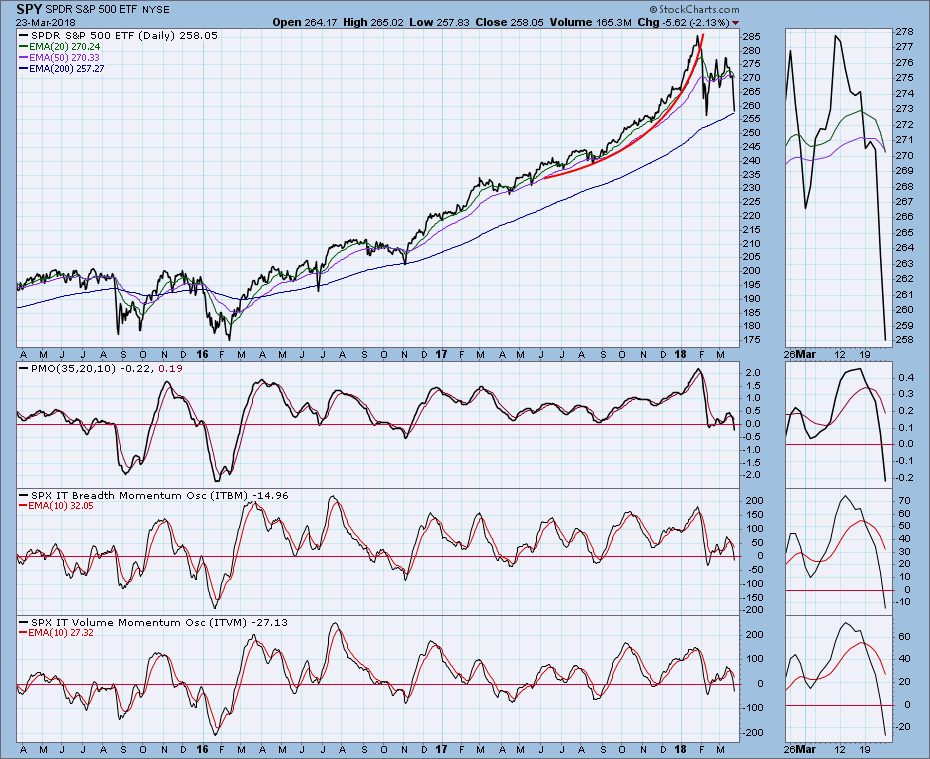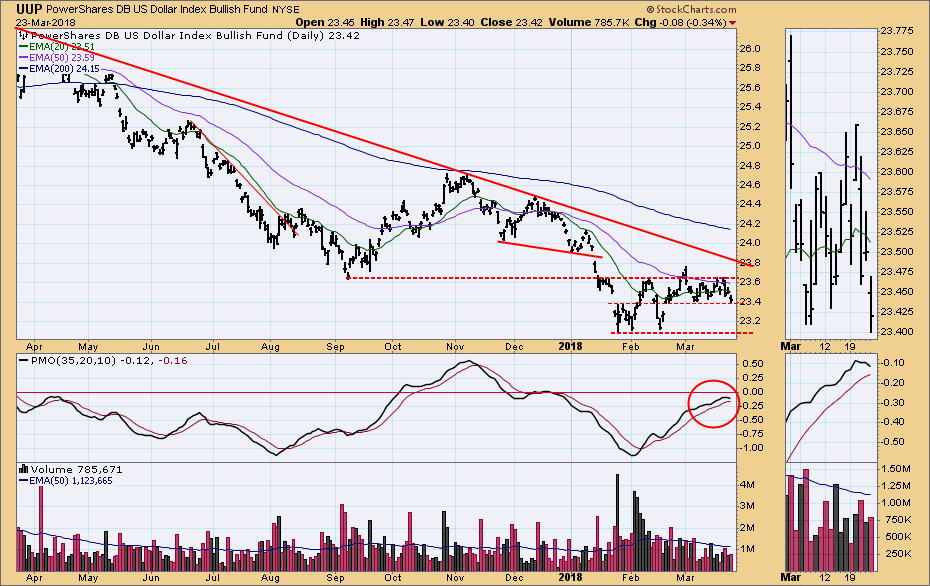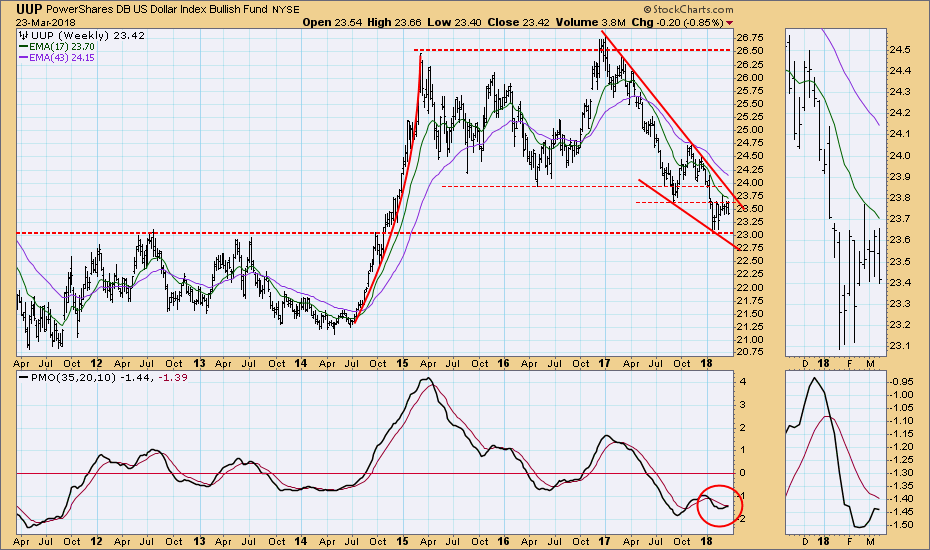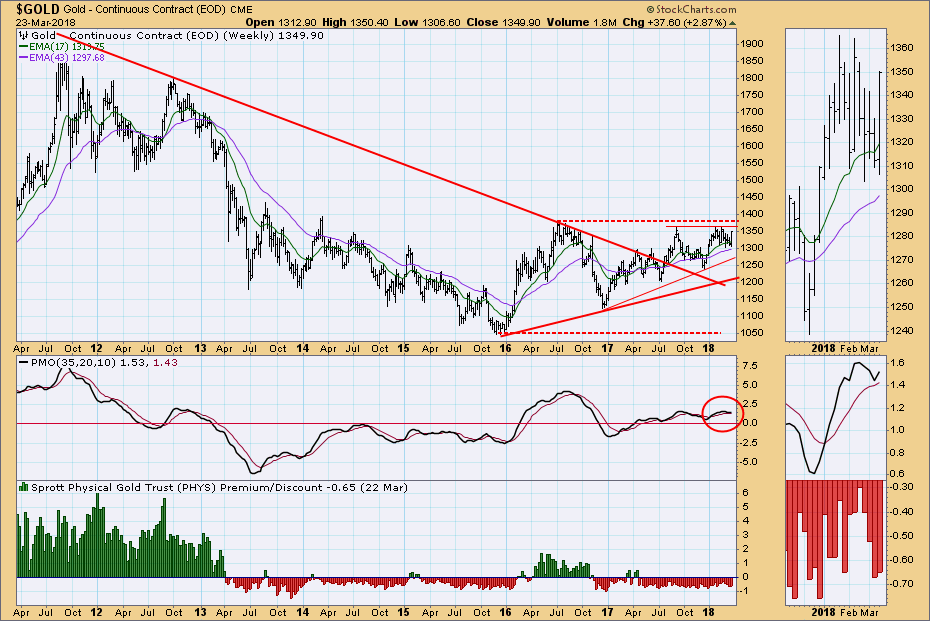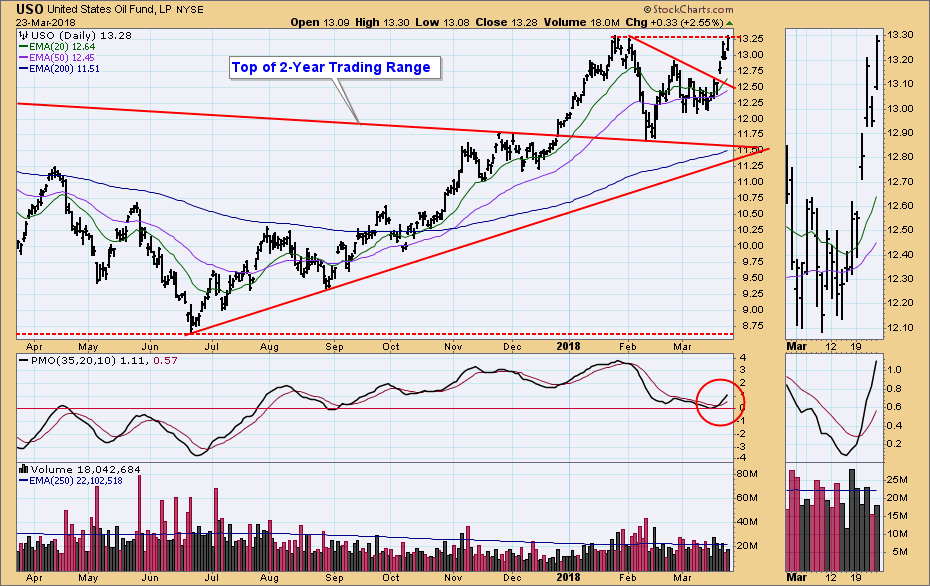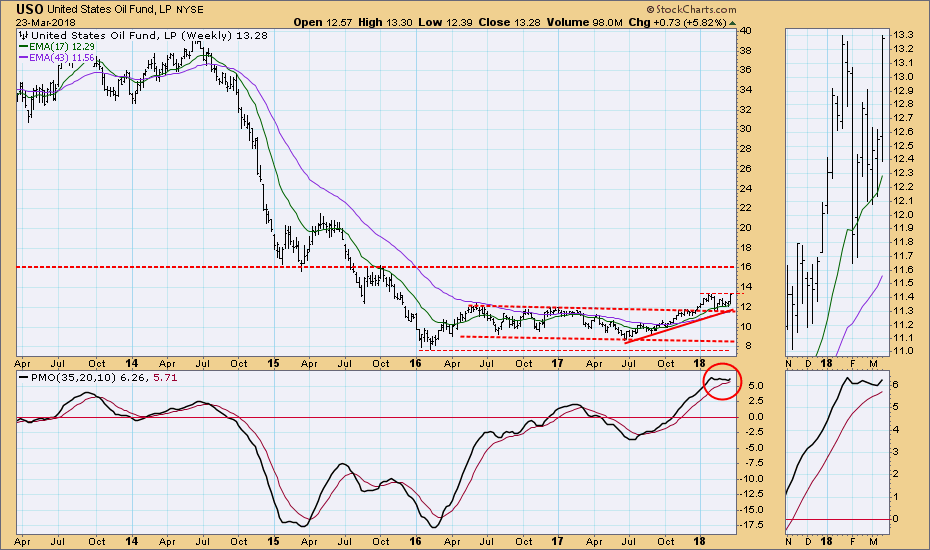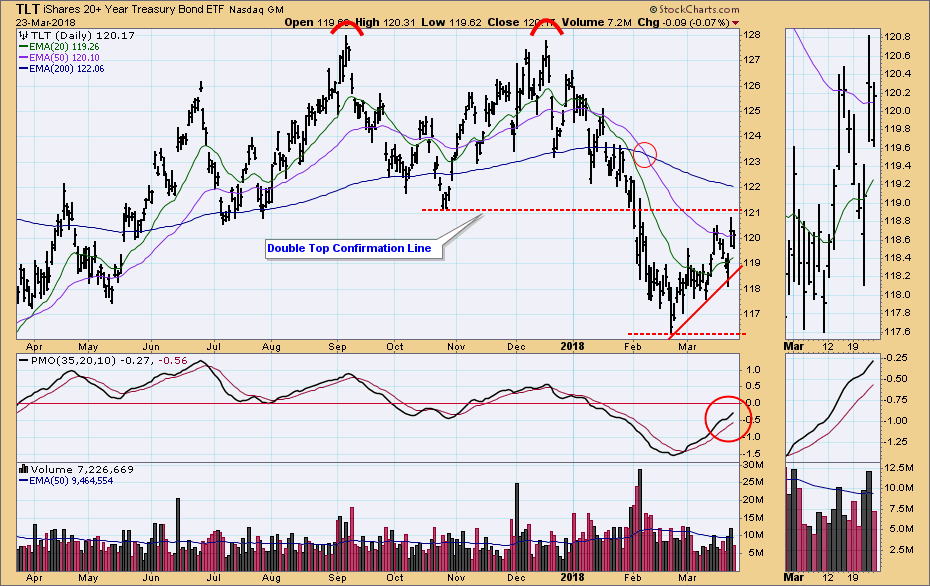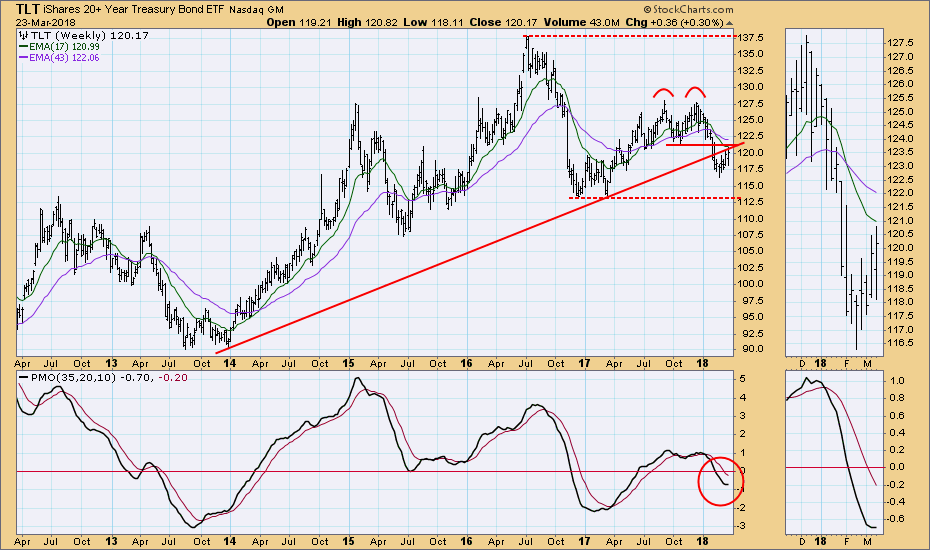
This week the rising wedge we had identified resolved downward, as expected. Once that happened, we needed to provide a context that could help determine an initial downside target, so we focused on the double top confirmation line, drawn across the low between the tops. That line was violated on Friday, and now the minimum downside target is the support line drawn across the February low. Actually, the double top downside projection is slightly below that line, but I chose to go for the obvious. The IT Trend Model BUY signal, one of the longest lasting that I can remember, switched to NEUTRAL on Friday when the 20EMA crossed down through the 50EMA. (A NEUTRAL signal is a 'soft' SELL signal because the position is cash or fully hedged, not short.)
The DecisionPoint Weekly Wrap presents an end-of-week assessment of the trend and condition of the stock market (S&P 500), the U.S. Dollar, Gold, Crude Oil, and Bonds.
SECTORS
Each S&P 500 Index component stock is assigned to one, and only one, of 10 major sectors. This is a snapshot of the Intermediate-Term and Long-Term Trend Model signal status for those sectors.
At the beginning of March, when I published the original version of this table, Arthur Hill also published an article pointing out that the five largest sectors represented over 75% of the S&P 500 market cap. I had never thought of that angle before for sectors, so I contacted him and he was kind enough to point me to the source (https://us.spdrs.com). Consequently, I have incorporated the percentage of total market cap represented by each sector. Only two of the ten sectors are still on IT BUY signals. Since they are two of the largest sectors, 40% of the total market cap remains bullish.
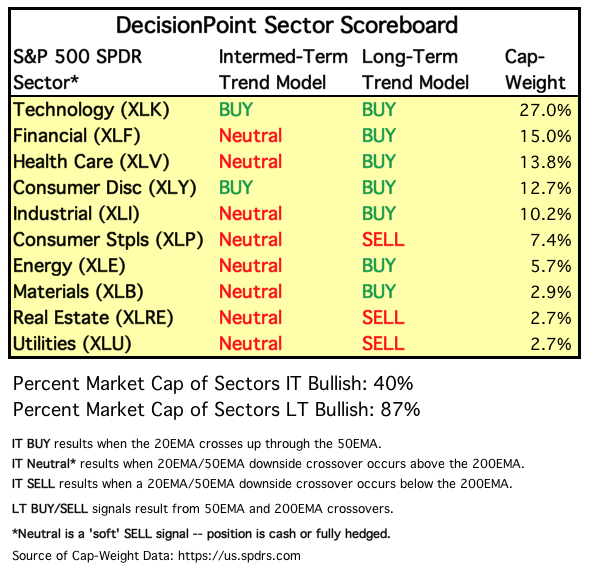
STOCKS
IT Trend Model: NEUTRAL as of 3/23/2018
LT Trend Model: BUY as of 4/1/2016
Daily Chart: The broader context of the one-year chart brings the cyclical bull market rising trend line into view. It is obvious that, if the February low is retested, the bull market trend line will be violated, signaling the end of the cyclical bull market.
Weekly Chart: On the weekly chart we can see that the cyclical bull market rising trend line has been violated a second time this year. This is because the angles can be different on charts in different time frames. Personally, I will use the daily chart as my primary guidance, but we can see that the weekly PMO is a wreck.
Short-Term Market Indicators: The STO-B (breadth) and STO-V (volume) are becoming very oversold on a bull market basis; however, bear markets can take these indicators to -600 and lower. A reminder, one of the bear market rules is that oversold readings are dangerous. Instead oversold readings promising bull market compression, they warn of bear market quicksand.
Intermediate-Term Market Indicators: Bear market stress on the ITBM and ITVM can drive them to around -300. As you can see, we have a long way to go, if we are in a bear market.
Conclusion: I am assuming that we are in a bear market. Not all of the technical signs have been triggered, but market behavior has me convinced. I want to emphasize that the parabolic advance and breakdown in January/February was the first and most convincing event pushing me into the bear camp. Now the IT Trend Model for SPY has changed from BUY to NEUTRAL (soft SELL), and price action is uninspiring to say the least.
Obviously, the market is in the process of retesting the February lows. I can make a case for price finding support on the 200EMA and the bull market rising trend line, but, if I'm right about the bear market, that support won't hold for long, if at all.
Finally, let's address the idea that the market is fundamentally sound. The chart below shows that the market is grossly overvalued. This is not a timing tool, but it is a bright red warning light.

DOLLAR (UUP)
IT Trend Model: SELL as of 12/21/2017
LT Trend Model: SELL as of 5/24/2017
Daily Chart: The daily PMO has topped below the zero line, but the move so far does not look decisive. Let's expect a breakdown through the support at 23.40.
Weekly Chart: The weekly PMO is trying to top below the signal line and the zero line. If UUP tops below the top of the massive falling wedge, that would be more negative news.
GOLD
IT Trend Model: BUY as of 1/2/2018
LT Trend Model: BUY as of 4/12/2017
Daily Chart: With the exception of a short incursion below the confirmation line at the beginning of the month, the double top formation on gold failed to break down. This week gold broke above a declining tops line, and is headed toward overhead resistance at about 1364.
Weekly Chart: The most immediate overhead resistance is at about 1364, but longer-term resistance at 1375 is drawn across the 2016 high. As I have said many times before, that resistance must be taken out before a long-term rising trend will be established. Nevertheless, gold continues to be slightly bullish.
CRUDE OIL (USO)
IT Trend Model: BUY as of 9/6/2017
LT Trend Model: BUY as of 11/2/2017
Daily Chart: This week USO broke above a declining tops line, but it is now up against horizontal resistance. The daily PMO is rising off the zero line, and it will allow for continued continued price advance before it becomes overbought.
Weekly Chart: Assuming that the rally continues, 16.00 looks like a reasonable upside target (about $78/bbl for crude). The weekly PMO is overbought, but rising.
BONDS (TLT)
IT Trend Model: NEUTRAL as of 1/11/2018
LT Trend Model: SELL as of 2/8/2018
Daily Chart: Following the Fed's rate hike this week, TLT rallied up toward overhead resistance. I would have expected just the opposite, but this shows how the market's reaction to fundamentals can often be puzzling. Since TLT is in a bear market, I assume that resistance will not be overcome.
Weekly Chart: The weekly PMO is trying to bottom, but resistance lines look formidable.
**Don't miss any of the DecisionPoint commentaries! Go to the "Notify Me" box toward the end of this blog page to be notified as soon as they are published.**
Technical Analysis is a windsock, not a crystal ball.
Happy Charting!
- Carl
NOTE: The signal status reported herein is based upon mechanical trading model signals, specifically, the DecisionPoint Trend Model. They define the implied bias of the price index based upon moving average relationships, but they do not necessarily call for a specific action. They are information flags that should prompt chart review. Further, they do not call for continuous buying or selling during the life of the signal. For example, a BUY signal will probably (but not necessarily) return the best results if action is taken soon after the signal is generated. Additional opportunities for buying may be found as price zigzags higher, but the trader must look for optimum entry points. Conversely, exit points to preserve gains (or minimize losses) may be evident before the model mechanically closes the signal.
Helpful DecisionPoint Links:
DecisionPoint Shared ChartList and DecisionPoint Chart Gallery
Price Momentum Oscillator (PMO)
Swenlin Trading Oscillators (STO-B and STO-V)

